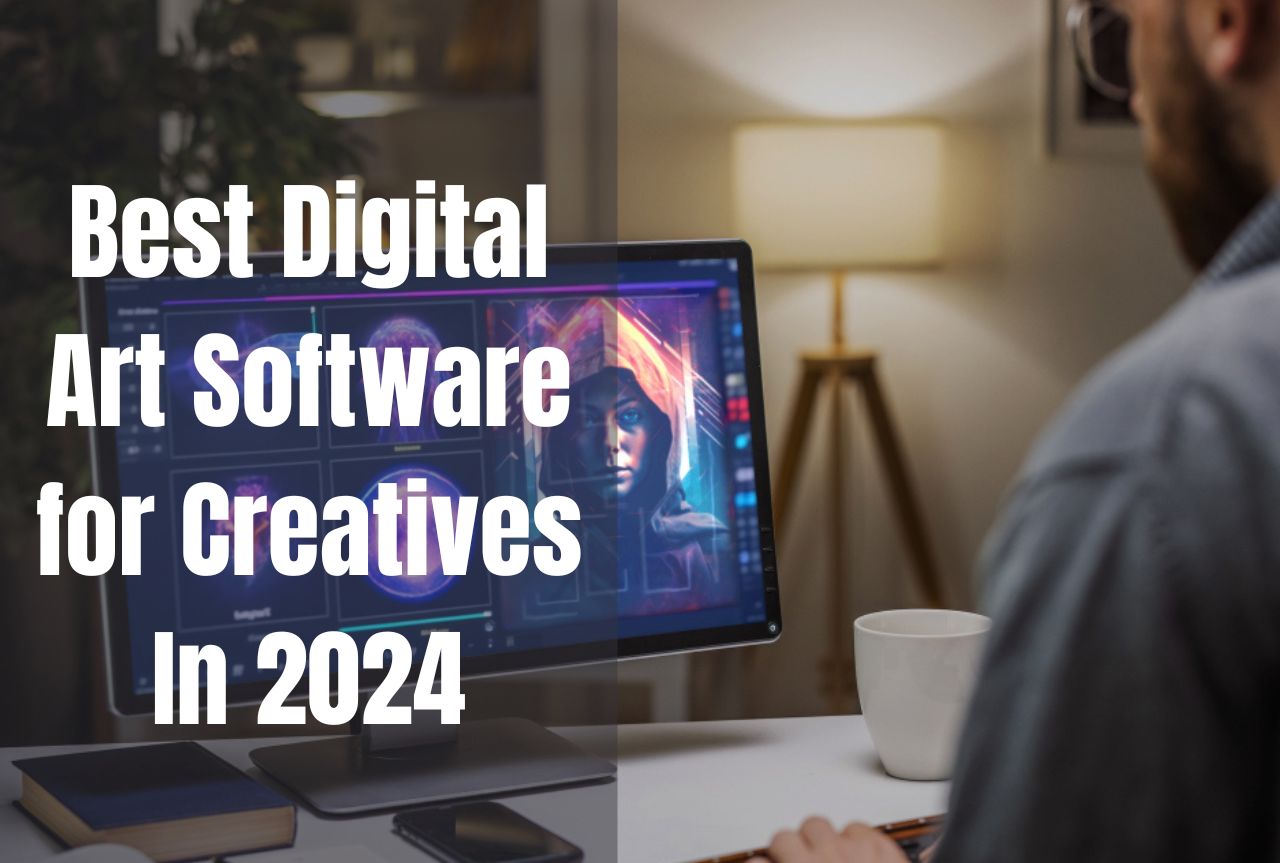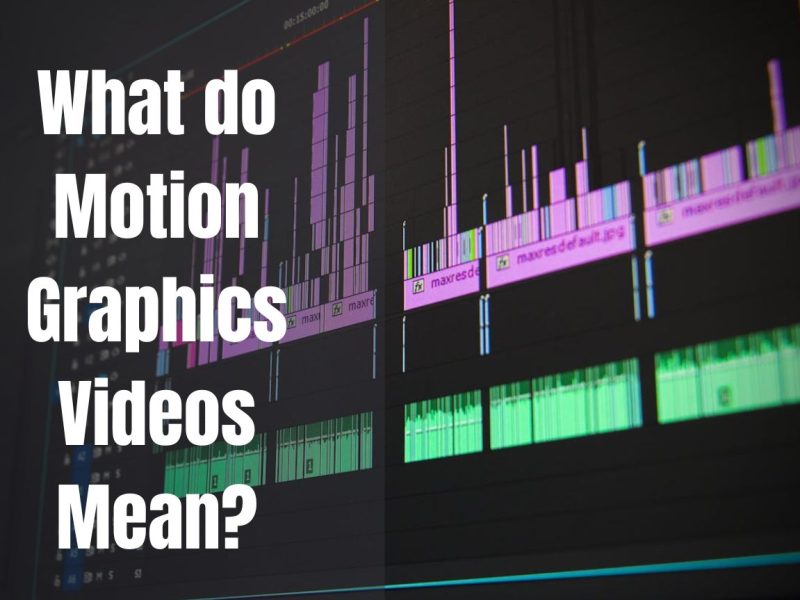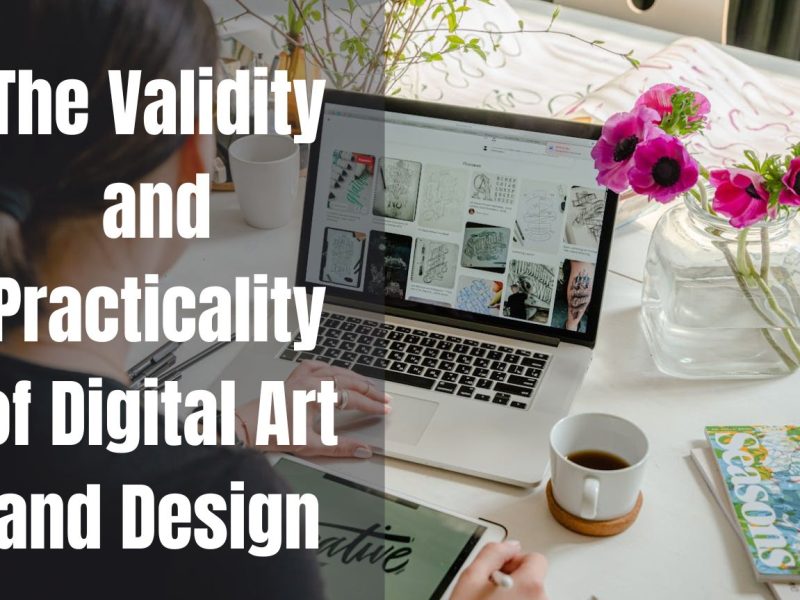Digital art software has changed the way artists show their work. These programs are must-haves for artists, illustrators, and designers because they have strong tools and easy-to-use interfaces. Finding the best software for your artistic style and process is essential as the demand for digital art rises.
This guide will look at the best digital art tools for creative people and tell you about their features, strengths, and how well they work for different art projects.
What Should You Look for in Art Software?
There are a few important things you should think about when picking digital art tools to make sure the creative process goes smoothly and quickly. Here are some important things to look at:
Interface that is easy to use
A well-thought-out system can make you much more creative and productive. Look for software with an easy-to-use layout, tools that are quick and simple to find, and areas that you can change. You can speed up your work even more with shortcuts and hotkeys, letting you focus on your artistic idea without any extraneous distractions.
Brush Library and Brush Engine
The brush engine and brushes’ library make digital art tools work. Look for programs that offer many different brush types, from digital brushes that look like real ones to programs that imitate traditional ones. Making your brushes and textures can give you much artistic freedom and help you find your style.
Managing the Layers
Non-destructive editing and compositing depend on being able to handle layers well. Look for software that lets you change the way layers work by adding adjustment layers, cutting masks, and layer groups. This tool enables you to try new things without changing the original artwork.
Color Management
Color is an important part of digital art, and improved color tools can improve your work. Look for software with many color schemes, color harmony options, and color blending options. Support for different color profiles and types makes sure that colors are shown correctly on all devices and media.
Getting along and compatibility
Compatibility and integration with other tools can make or break a creative project in today’s connected world. Check to see what file formats are supported, if it works on multiple platforms, and if it can work with other artistic tools you use, like 3D modeling or video editing software.
Top Digital Art Software for Creatives
Now that you know what to look for in digital art tools, let’s take a look at some of the best options:
The Adobe Photoshop
Adobe Photoshop doesn’t need to be introduced because it is the standard for changing digital art and photos. It is a favorite among professionals and hobbyists because it has powerful tools, features, and free learning resources. Photoshop is great at changing raster images, but it also has vector tools and 3D features that make it useful for various artistic styles.
Corel Painter
Corel Painter is a great pick if you’re an old-school artist who wants to switch to digital art easily. Painter is famous for imitating natural media so well that it has realistic brush strokes, textures, and drawing methods that look like oils, acrylics, and watercolors. Artists of all levels will enjoy using it because of how easy it is and how quick the brush engine is.
Clip Studio Paint
Clip Studio Paint is popular among animators and sequential artists because it works well for making comics and manga. It has a lot of brushes, vector tools, and panel-based working features that make making comics quick and easy. Clip Studio Paint is liked by both amateurs and professionals in the comic and illustration industries because it is cheap and has a lot of different tools.
Krita
Krita is a great choice for people who want a free and open-source digital art program. Even though Krita has a free version, it has many useful features, such as powerful brush engines, non-destructive editing, and the ability to work with large canvas sizes. Thanks to its busy community, Krita is a good choice for beginners and experts because it is constantly developing and improving.
Procreate (iPad only)
Procreate is the best digital art app for iPad users who want a powerful, easy-to-use experience. Procreate is a drawing app that works naturally and responsively with the Apple Pencil. It was made to work with Apple’s iPad. Digital artists who value portability and on-the-go creativity love it because of its user-friendly layout, extensive brush library, and sophisticated layer management tools.
Factors to Consider When Choosing Software
There are many features in the software options listed above, but the best one for you will rely on a few things that are unique to your needs and tastes:
Level of Skill
Look at your current level of skill and your plans for the future. Some software may be better for beginners because it has a smaller learning curve and more materials that are easy for beginners to understand. Other software may be better for experts because it has more advanced tools and features that professionals need.
Artistic Style and Workflow
Think about the kinds of art you make and the style you use. Are you a traditional artist who wants to switch to digital art? Do you know much about drawing, editing photos, or making idea art? Each piece of software may be better at certain tasks, so pick the one that works best for your artistic process.
Budget and Pricing
There are many different kinds of digital art software, from free and open-source to paid subscriptions and one-time purchases. Check your budget and long-term financial commitment to determine your best choice. It may be tempting to use free software, but paid options often have more functions and better customer service.
Hardware and System Requirements
Your computer or tablet should have at least the bare minimum needs for the software you want to buy. More RAM, processing power, and compatible hardware, like graphics tablets or pen displays, may be necessary for powerful digital art tools. Consider your present setup and any upgrades that might improve your creative experience.
Additional Tips and Resources
Here are some tips and tools that can help you improve your digital art:
1. Online Tutorials and Learning Platforms: There are a lot of online tutorials, video classes, and learning platforms that you can use to learn more about the software you want to use. Many software companies have detailed lessons, and independent artists and teachers share helpful information on sites like Udemy, Skillshare, and YouTube.
2. Art Communities and Forums: Join online communities and forums to talk with other artists and art fans. You can share your work, get feedback, and learn from other users who have used these tools. In addition, they can be great places to get ideas and work together.
3. Hardware Recommendations: Even though software is necessary, buying good tools can improve your digital art experience. You might want to buy a graphics tablet or pen display to make drawing and painting feel more like real life. You can also improve your art using high-quality devices that accurately show colors.
4. Inspiring Digital Art: Get lost in digital art by looking through galleries, portfolios, and showcases showing off amazing work made with different software. These pictures can give you ideas, show you what different programs can do, and encourage you to be creative beyond what you think is possible.
In short
Choosing the right program is up to you and your artistic goals, preferences, and workflow. The choices in this guide give you a wide range of tools and options for showing your creative vision, whether you’re a seasoned pro or a new artist.
Don’t forget that the software is just a tool. Your creativity, hard work, and love make your digital masterpieces come to life. Have fun exploring, try different programs, and don’t be afraid to leave your comfort zone. For those brave enough to make it, the world of digital art is vast and full of possibilities.



